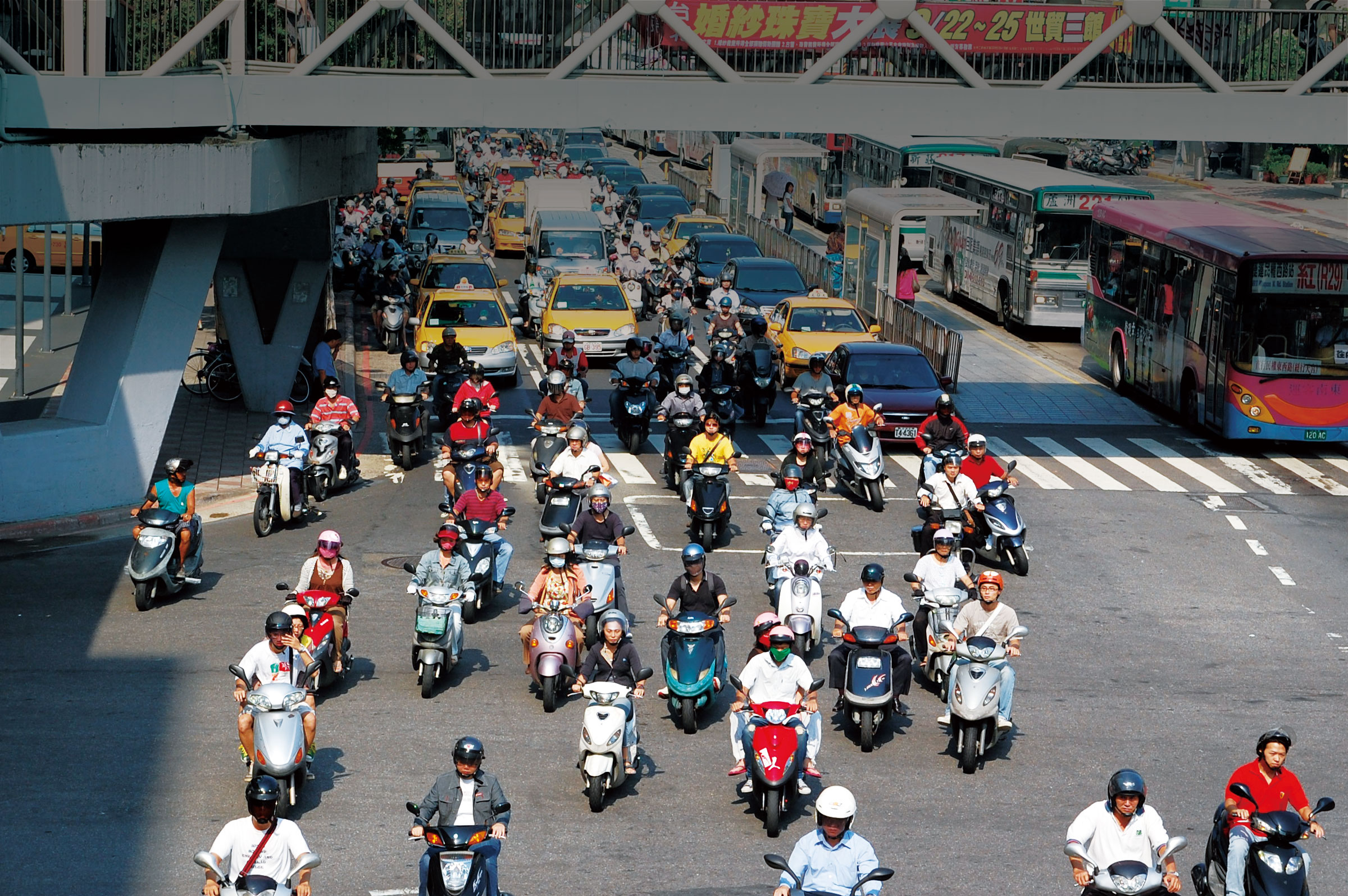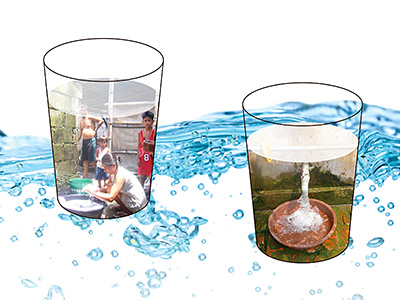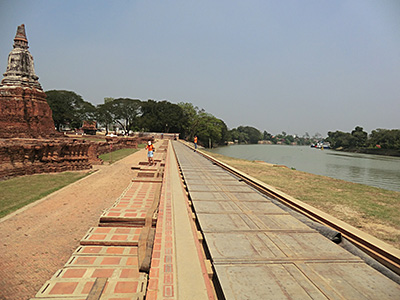STORY #5
Imposed transportation systems
have now reached their limit
- Indonesia
- Vietnam
- Thailand
- Cambodia
Yasuhiro Shiomi
Associate Professor,
College of Science and Engineering
If transportation systems improve,
cities may drastically improve
Motorcycles are widely used as a means of transportation in many cities in Southeast Asia. At junctions in these cities, a vast number of motorcycles rush ahead, almost as if they are swallowing up the automobiles on the road.
In recent years, automobiles have become more common, and this now poses a serious threat in terms of both safety and efficiency in transportation.
Additionally, worsening environments caused by air pollution are not something that can be ignored. Can chaotic traffic in Southeast Asia be controlled in order to create a safe and efficient traffic environment? Yasuhiro Shiomi tackles this difficult issue.
One of the main reasons for the traffic congestion and frequent road accidents in Southeast Asia is the introduction of road and junction configuration from more advanced countries that are based on a design assuming primarily passenger cars. "Transportation systems that do not considering the fact that there are a great many two-wheel vehicles on the road are malfunctioning. In order to solve this problem, it is necessary to first establish a method to properly forecast traffic dynamics in consideration of the characteristics of two-wheel vehicles," Shiomi says.
He introduces an interesting model to explain the behavioral features of motorcycles and passenger cars when they are mixed together in traffic.

"We assumed that a vehicle selects its destination from 15 alternatives of discrete space in the directions of turning left, right or going straight, and we developed a simulation model to assume the destination of each vehicle 0.5 seconds after a certain moment. This model has revealed an asymmetrical characteristic that, while passenger cars run at their own pace without paying undue attention to the motorcycles around them, two-wheel vehicles tend to travel dexterously trying to avoid cars. Considering this situation, we were able to vaguely grasp how motorcycles and passenger cars manage to move in a congested situation."
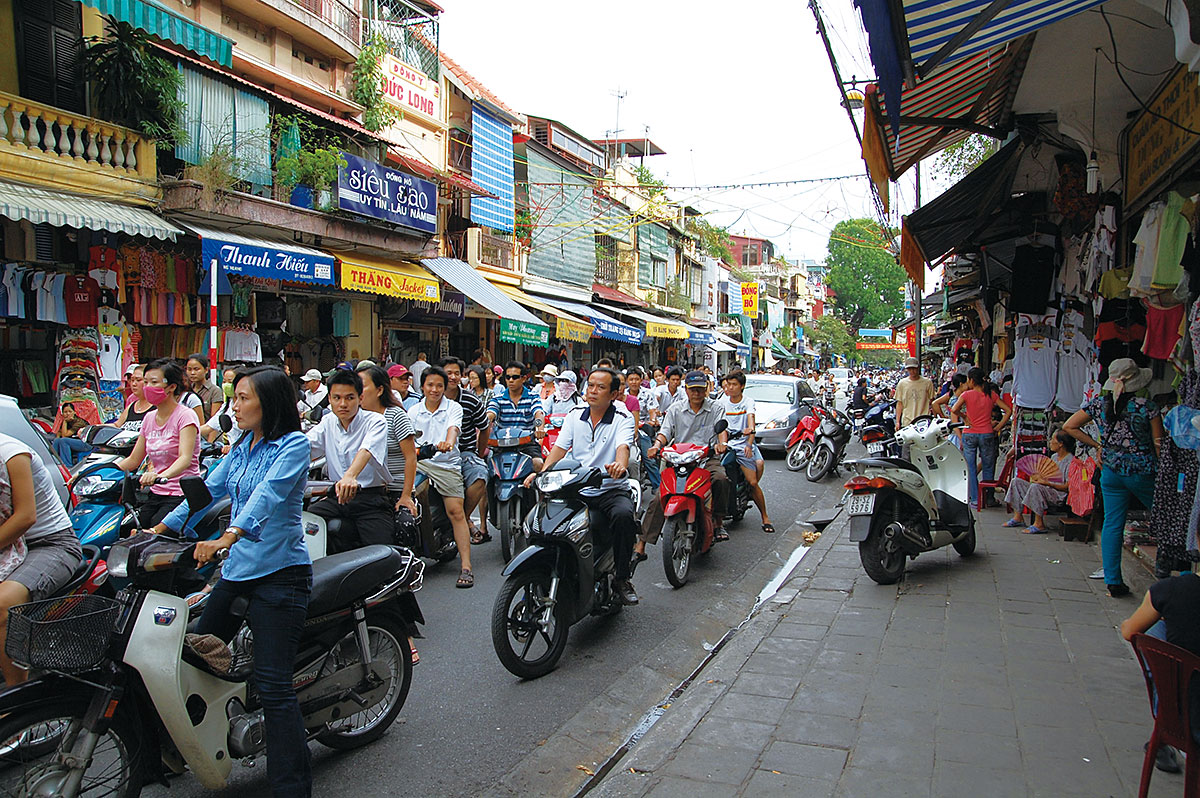
It is also an important challenge to mechanically identify passenger cars and motorcycles and understand traffic conditions in real-time in order to improve transportation situations in Southeast Asia.
Since the sensors that should be installed on roads are not deployed sufficiently, traffic conditions cannot be fully understood. However, even with the use of sensors, as in advanced countries, it is difficult to identify motorcycles when mixed in traffic in such large numbers. Shiomi thus devised a method using a new tool. His idea was to identify vehicle types by collecting GPS information and acceleration data from the smartphones of drivers of four and two-wheel vehicles.
In the city of Kota Makassar in Indonesia, passenger cars and motorcycles equipped with a smartphone were tested, and Shiomi obtained multiple run data for each vehicle. Depending on where the smartphone was placed, the device can be affected by the vibration of the engine, so to eliminate any potential discrepancies, while each smartphone was attached to the dashboard of the car, Shiomi used four methods for two-wheel vehicles: attached to the handlebars, placed in a trousers pocket, hung from the neck with a neck strap or attached to the chest with tape.
For motorcycles with smartphones fixed with an attachment, vibration from the engine is amplified by the handlebars and shows a resultant acceleration within a specific fluctuation range, making it easy to identify these motorcycles. However, the difference between other motorcycles and passenger cars could not be as clearly identified by resultant acceleration.
Shiomi thus paid additional attention to the power spectral density of resultant acceleration. He was able to successfully identify motorcycles of all smartphone patterns and passenger cars with high accuaracy by distinguishing four-wheel vehicles, two-wheel vehicles with an attachment and the other two-wheel vehicles based on the difference of their low frequency components.
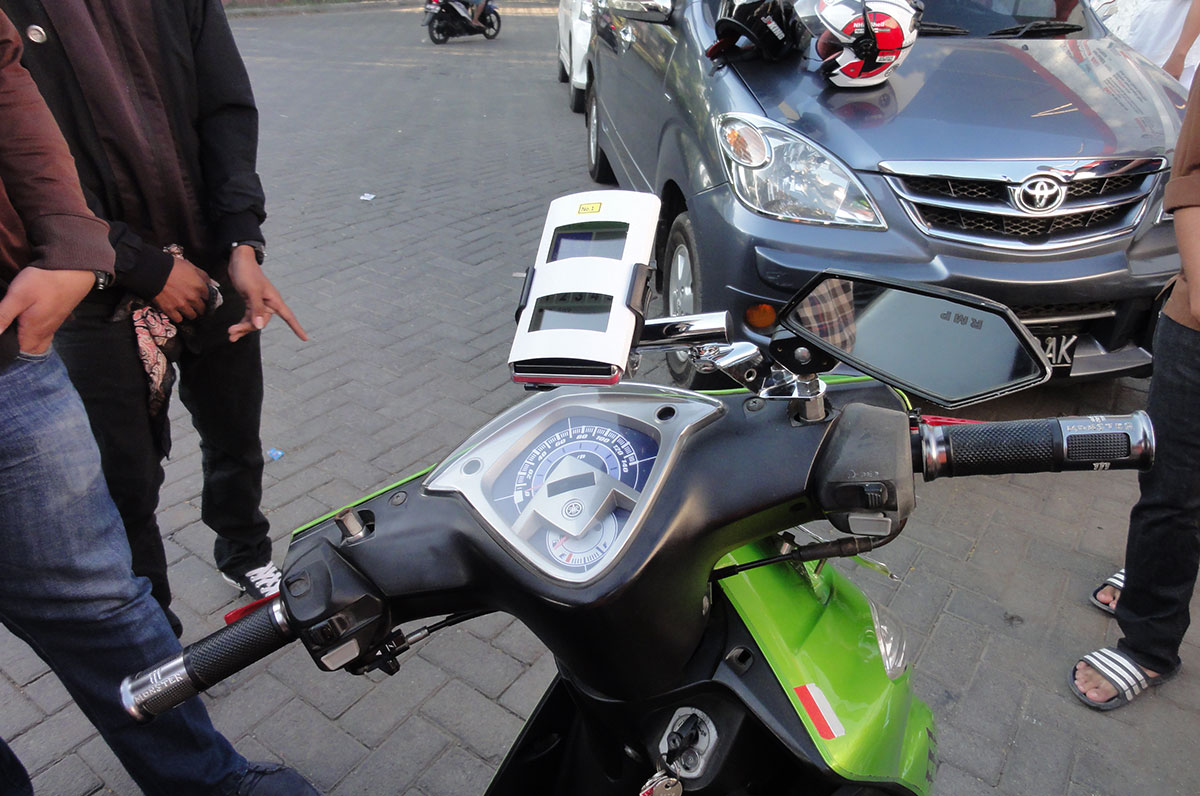

"If we can identify vehicle types in a highly accurate manner from data that can be acquired from an easily accessible tool like a smartphone, the possibilities will increase for traffic monitoring by vehicle type," Shiomi says.
Furthermore, Shiomi also discovered a method for understanding traffic conditions using the Bluetooth sensor that is built in smartphones. In Indonesia, he set up Bluetooth receivers at junctions. By counting the MAC addresses detected from the smartphones and car navigation systems near the receivers every 5 seconds, it was possible to measure the approximate speed of the traffic flow and the amount of traffic volume in a more or less. By setting these receivers, traffic congestion could be identified easily.

"By combining these research results, we can better understand traffic conditions in cities and more effectively manage traffic by guiding passenger cars with messages such as 'there are many motorcycles on this road, so it should be avoided,' or 'since there is traffic congestion on this route, please find an alternative'," Shiomi says. Traffic systems that have been imposed by advanced countries have reached their limit. Building transportation systems tailored to the actual characteristics of the traffic in each country and region substantially shows the importance of Shiomi's studies. "If transportation systems improve, cities themselves can drastically improve," Shiomi says.
"We can contribute to the creation of a richer and more sustainable society through transportation. The sheer magnitude of the possibilities on offer is a genuine delight of this particular research."


Yasuhiro Shiomi
Associate Professor,
College of Science and Engineering
Subject of Research: Studies to create transportation systems that are smooth, safe, comfortable and environmentally-friendly by using ITS (Intelligent Transportation System) and IT technologies.
Research Keywords: Traffic Engineering, Transportation Planning
